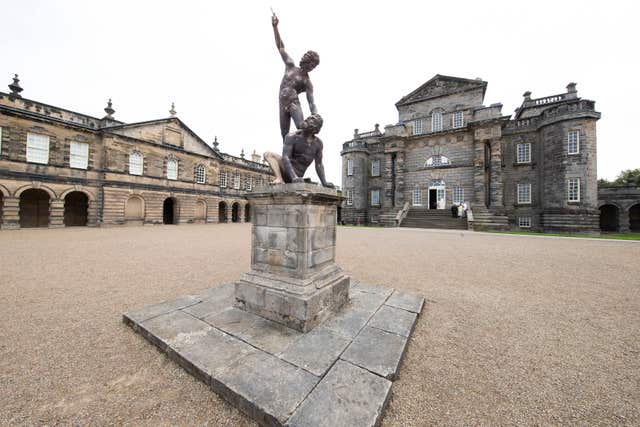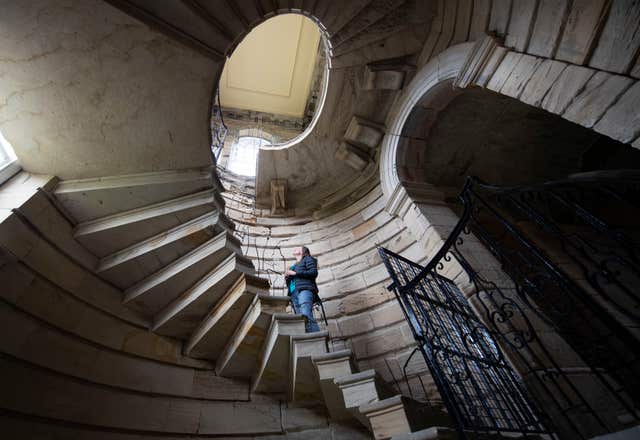
The largest winter roost of common pipistrelle bats in the UK has been recorded in a fire-scarred stately home, the National Trust has said.
The discovery of 61 bats in stone crevices and arches of a balcony at Seaton Delaval Hall in Northumberland has revealed previously unknown information about the species’ hibernation habits, the Trust said.
Seaton Delaval Hall was a grand 18th century baroque “party” house belonging to the flamboyant Delaval family, hosting their costume balls, elaborate practical jokes and spectacular theatrical productions.

The hall, which was partially destroyed by fire in 1822, was bought in 2009 by the National Trust, which undertook much-needed conservation work.
It has recently been awarded £3.7 million National Lottery funding for repairs and restoration, as well as moves to improve visitor facilities and bring its past to life.
An ecology survey carried out to assess whether it was possible to install new art and visitor information in the central hall of the building revealed the presence of more than 60 bats – with more thought to be hidden in crevices.
The National Trust’s head of nature conservation David Bullock also expressed surprise the pipistrelles were choosing to roost in light and dry crevices, as he said most bats like cool, moist and dark hibernation sites.

Bats have made their home at Seaton Delaval for many years, believed to have first come to roost in the hall after it was ravaged by fire in 1822 and left exposed to the elements for more than 40 years.
The installation of a new roof in the later 19th century made the space warmer and drier but still allowed bats access through crevices in the stonework.
Tina Wiffen, bat ecologist, said: “We discovered the bats when we were undertaking an ecological survey to assess the possibility of introducing new art and visitor information installations into the central hall of the building – a project being supported by the National Lottery.

“On finding the bats, we conducted a formal survey and at least 60 bats were counted in February and 61 in early March – with more visits then needed for verification.
“It’s likely that even more bats are here, hidden in deeper crevices.
“As a result the site will now be even more closely managed and monitored to ensure that the bats can continue to use the hall as their winter roost.”
Mr Bullock recently visited the hall to verify the findings, and said: “I’ve never encountered hibernating pipistrelles in such numbers before.
“The cavities in the stones in Seaton Delaval Hall’s central hall provide one of the few known hibernation sites of what could be hundreds of bats.
“Most bats like cool, moist and dark hibernation locations. In contrast, the pipistrelles residing in the central hall were in light and dry crevices.”

The National Trust said it will use some National Lottery funding for further surveying work to learn more about how the bats use the hall so it can protect the pipistrelles before any of the planned repair work starts later this year.


Comments: Our rules
We want our comments to be a lively and valuable part of our community - a place where readers can debate and engage with the most important local issues. The ability to comment on our stories is a privilege, not a right, however, and that privilege may be withdrawn if it is abused or misused.
Please report any comments that break our rules.
Read the rules here